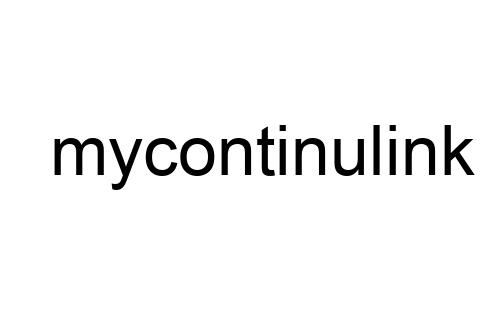Digital development is incorporating new technologies at an unprecedented pace. New era innovations are changing various industries, such as artificial intelligence, blockchain, augmented reality, and quantum computing. New emerging technologies not only expand the frontiers of technological possibilities, but also set new standards in efficiency, security, and interactivity. Each sector has its own challenges. For example, gamified platforms with complex risk-reward mechanisms integrated into them often resemble the high-stake logic of a Divinecasino where smarter choices yield better returns. The digital age landscape, its key enabling technologies, new trends, and emerging concepts that relate to strategies designed to enable this revolution are astonishing.
Revolutionize Trends and New Concepts of Digital Innovation Strategy
Technological advancements are transforming the unimaginable into a reality and redefining entire industries. Few notable advances include artificial intelligence, blockchain, and quantum computing. They open a whole new dimension of solutions which were simply regarded as science fiction not very long ago.
- Artificial Intelligence (AI): Artificial Intelligence (AI) is a key example; it is now possible for machine learning algorithms to analyze data and devise new strategies. This not only helps the all-consuming evolution of autonomous vehicle, but also creates life-like robotics who engage intelligently in numerous dictatorial functions such as advanced customer service.
- Blockchain Technology: Transforming and securing digital identities in data management fields such as cyber technology and verifying data security is possible with immutably decentralized record-keeping through blockchain technology. It has revolutionized everything beyond just cryptocurrency.
- Quantum Computing: The adoption of quantum computing is set to offer unprecedented increases in computational power. Superposition and entanglement are expected to restructure complex problem solving for classical computers. Quantum computers are set to solve complex challenges that current technologies just can’t tackle.
Table: Key Technological Breakthroughs
|
Technology |
Key Features |
Impact on Industries |
|
Artificial Intelligence |
Machine learning, natural language processing, predictive analytics |
Increased decision making, automation of professionals in healthcare and finance |
|
Blockchain |
Decentralized ledger, smart contracts, cryptographic security |
Secure transaction and supply chains alongside integrity of data protection. |
|
Quantum Computing |
Quantum bits (qubits), superposition, entanglement |
Complex optimization problem solving alongside RnD restructure. |
Catalyzing a shift towards innovative digital ecosystems, these various sector breakthroughs ensure technological progress as a more efficient and secure emplaced system.
Emerging Trends in the Digital Transformation Realm: Top 10 Cutting-Edge Technologies
Virtual reality (VR) and augmented reality (AR) are some examples of immersive technologies that are changing the world. They allow users to interact with digital information and participate in the physical environment meaningfully.
- Augmented Reality (AR): Through real-time data, interactive visuals, and enhanced graphics, Augmented Reality (AR) allows users to interact with their everyday tasks boosting productivity.
- Virtual Reality (VR): VR enables the creation of completely immersive environments that impact entertainment, training, and remote collaboration in novel ways.
Shape For Further Developments on IoT
The Internet of Things is promoting expansion of the digital ecosystem by optimally linking various devices and systems to enhance efficiency gain and provide new value insights. From smart homes to industrial automation, IoT is creating an interlinked web of systems that offer real-time monitoring and control.
- Smart Homes: Interfaces and appliances such as the thermostat, security cameras, and other home gadgets are harmoniously integrated to aid in convenience and saving energy.
- Industrial IoT: The use of sensors and connected machinery allows the optimization of the processes in manufacturing and supply chain management, lowering downtime and increasing productivity.
Table: Emerging Digital Trends
|
Trend |
Description |
User and Industry Impact |
|
Immersive Technologies |
Integration of everyday applications of AR/VR |
For sophisticated multitasking, high user engagement activities, and for extraordinary training and entertainment experiences. |
|
Intelligent Internet of Things (IoT) |
Refers to the network of interconnected devices that provide real-time data exchanges |
For enhanced efficiency in smart logistics and predictive maintenance for system servicing automaton. |
|
5G Connectivity |
These ultra-fast data transfer speeds at very low latency |
Enables seamless streaming in real time communication and enhance IoT performance. |
The last three emerging digital trends are of significant importance in building a digitally enhanced and interactive world focused more on servicing and usability, demanding favorable experiences from users.
Measuring the Value of Data and Analytics
Strategic Direction from Big Data
In this new world, data is the form of currency companies vie for. With big data analytics, companies devise strategies that ensure competitive advantage at the expense of other players in the market. With the power to collect, process, and analyze massive amounts of information, companies are able to comprehend the evolving consumer behavior, enhance their operational efficacy, and even anticipate trends.
- Generating Data: The social media and IoT devices with other modern day sensors have advanced so much that they can generate an unlimited number of data points.
- Processing Data: Complex datasets are processed within seconds in cloud edge computing servers and advanced high-performance workstations.
- Analyzing Data: With the data-driven decision frameworks enhanced by Artificial Intelligence and Machine Learning that provide actionable insight, making decisions becomes easier.
The Difference between Real Time Insights and Predictive Analytics
As forerunners of certain actions, business activities are based on historical data, while forecasting identifies the next step and attempts to predict what will come next. In real time analytics, figures are computed constantly, enabling instantaneous changes in response to observable data. This capability is highly precious for businesses.
- Changes in the market can be anticipated; therefore, proactive strategies can be implemented owing to predictive models.
- Behavior predicting offers customers and users immense value by providing the possibility of real-time analysis.
Cost Efficiency of Operations
Sustained Analytics incur new costs while optimizing resource allocation as well as advancing processes within a supply chain.
Table: Leading Decisions Based on Data
|
Aspect |
Processes |
Benefits |
|
Data Collection |
Obtaining Data through many digital points of interaction. |
Their in-depth analysis of users provides them with knowledge about the most popular trending activities. |
|
Data Processing |
Analysing Data with Cloud Computing technology. |
Advanced technology permits performing large scale analysis at short periods. |
|
Predictive Analytics |
Formulating predictions with machine learning algorithms. |
Provided decisions were informed, any business strategy could track changes and adapt in the execution phase of the initial plan. |
|
Real Time Analysis |
Monitoring and analyzing data occurs continuously with updates. |
Make proactive operational and marketing alterations. |
The use of data enables organizations to operate in a high-controlled internet environment. Precision and various thrusts of uncalculated analytics and action can be issued simultaneously rendering competition effortless regardless of the challenges.
Innovative Trends in Technology of Users Experiences and Interface Design
User Design Principles
Each and every digital innovation comes with some form of responsibility. Indeed, there are wishing design challenges. Captivating interfaces must be attractive and usable at all levels while allowing complete freedom for the users to move around the application easily. Above and around everything, user mobile.
Hierarchical principles – The “clean yards principle” focuses on simplifying core navigational features, almost eliminating everything other than critical UI elements on the screen focusing on guiding users towards important actions, which aids functions towards essential uncluttered user “clean yards” design.
- Usability – Interfaces designed to ensure functionality for all users, including persons with disabilities.
- Through immediate action provision, interactive features engender user participation.
- Transfer experience ease of consistency.
Importance Exploring Responsive and Adaptive Design
In responsive design adaptive difficulties, user navigation poses the greatest concern, particularly in regard to the variety of smartphones, desktops, and tablets. Therefore, considering the user interface, not only should the device be capable of ergonomically adapting to different screen sizes, but also to varying resolutions.
- Fluid Layouts – Layouts that automatically adjust to the user device for optimal performance.
- Scalable Graphics – The quality of an image, icon, or any other form of graphic does not change, whether enlarged or reduced in size, the use of screens. Images, icons and other graphics retain quality irrespective of the sizes of screens used.
- Streamlined Navigation: The menus and controls can be organized based on the relevant device being used by the user.
Table: Elements of User Experience Design
|
Design Elements |
Components |
User Value |
|
Simplicity |
Includes the essential features that are made available for interaction with the user. |
Navigation Made Accessible Less cognitive load. |
|
Ease of Accessibility |
As stated, there are no accessibility barriers to interacting with or consuming the relevant content. |
Wider audience and better holistic user experience. |
|
Interactivity |
Elements which are driven by user actions. |
More satisfying results to the users as it adds value and enriches the experience. |
|
Responsive Design |
Defined as self-adjusting interfaces. |
Ensures consistent experiences regardless of the gadget used to access the system. |
These design innovations ensure that users are continually attracted to the platforms, usable interfaces, and that the interfaces are reliably interactive and engaging.
Security and Ethical Issues in Technology
The Relevance of Cyber Security
The increasing importance of maintaining strong cybersecurity measures goes hand in hand with digital advancements. Sensitive data such as contact information is protected by sophisticated digital security methods, such as firewall barriers, intrusion detection systems, and secure methods of interaction contacts.
- Encryption: Safeguarding information during transit or while stored.
- Multi-Factor Authentication: Protecting unwanted access by making additional steps out of the verification process.
- Blockchain Security: Applying transactions to decentralized ledgers to allow for secure and transparent record keeping.
Ethical Use of Technology
There are equally important ethics to consider with the advancement of technology. Companies need to make sure they’re using the latest technologies in a responsible manner that preserves privacy, equity,
and access. Ethical principles ensure that innovations are designed and implemented to protect society from harm.
- Data Privacy: Creating and implementing policies in place that keep users’ information secure.
- Ensuring that AI and deep learning technologies operate without bias in their underlying logic and systems is termed unfair algorithms.
- Sustainable Practices: Implementing technologies and practices in operations that are less damaging to the environment.
Table: Essential Digital Security Measures
|
Security Measure |
Function |
User Benefit |
|
Advanced Encryption |
Protects sensitive information from unauthorized access while stored and transmitted |
Protects information from cybersecurity attacks |
|
Multi-Factor Authentication |
Identity verification occurs via multiple authentication steps |
Mitigates possibility of access and impersonation fraud |
|
Blockchain Security |
Serves as an open, distributed ledger that records transactions |
Fosters greater confidence and protection of data in digital transactions |
|
Ethical Data Practices |
Policies concerning responsible and equitable use of technology |
Guarantees privacy in a trust and assures trust to users in digital technologies |
The above security measures are important for the establishment of a trust and a secure digital economy where the users and people can engage with world innovations without hesitation.
Strategic Approaches to the Future of Cutting-Edge Technology
Driving New Digital Innovations By Convergence
Next generation digital innovations are being made possible by collaborative ecosystems. The convergence speed of technology companies, market leaders, and research institutes. It boosts digital innovation through resource combination, expertise integration, and by effective subcontracting.
- Joint Ventures: Collaborative initiatives aimed at integrating different technologies and competencies.
- Research Consortia: Collaborative research projects aimed at advancing the frontiers of knowledge.
- Cross-Industry Partnerships: Partnerships that integrate innovative technological solutions with other industries for implementation.
Agile Development and Continuous Improvement
Adapting to new opportunities in the market hinges on the ability to continuously improve. Agile methodologies take adaptability a step further with unrestricted market responsiveness through rapid iteration with continuous improvement. The agile approach focuses on:
- Iterative Development – Getting user feedback to enrich the offering
- Rapid Prototyping – Establishing new ideas to the market through rigorous testing
- Flexibility – Emerging trends and challenges don’t hinder work. Instead strategies being directed and pivoted towards them
Table – Strategic Priorities for Future Discoveries
|
Strategy |
Description |
Outcome |
|
Collaborative Ecosystems |
Partnerships between diverse organizations to drive innovation |
Accelerated breakthrough discoveries and market expansion |
|
Agile Development |
Rapid, iterative cycles for continuous improvement |
Enhanced adaptability and responsiveness to market needs |
|
Data driven technology |
Leveraging analytics to guide strategic choice and product development |
Informed strategies with enriched ‘user’ interactions |
|
Ethical Sustainable Practices |
Commitment to the responsible technology use, social responsibility, stewardship of resources, and environment |
Trustworthy eco-friendly digital ecosystem |
These strategic priorities help maintain the frontiers of today’s a rapidly evolving digital world, while anticipating collaborative, innovative ventures in days to come.
Anticipated Outlook: Envisioning the Possibilities of Tomorrow: Quantum Computing, Blockchain, Augmented Reality, VR
Innovation and New Age Connectivity
The evolution of connectivity and new technologies will surely drive the further growth of the digital frontier. The introduction of fifth generation(5G) networks, along with promises for faster data transfer will support more advanced application of technologies to be used interactively in real time. As artificial intelligence (AI), blockchain, augmented reality(AR), and virtual reality (VR) technologies for computer vision are developed and matured, the possibility for groundbreaking innovations will increase in multifolds.
Market Growth and Global Influence
New mobile and internet connections around the world are providing limitless opportunities. The use of internet and mobile connections will allow several new forms of digital platforms to connect to these audiences and help extend market reach, making the world more integrated. Diverse cultures and economies will be captivated even further through localized content and tailored experiences.
Final Thoughts: Advancement Examples of Cutting-Edge Technologies Refer
Through the development of AI or artificial neural network, blockchain, AR/VR systems, and other forms of technology, the possibilities of creating or discovering new forms of modern digital platforms which redefine the speed, security and interaction gets easier. Along with new and cutting edge systems of the digital realm, strategic collaboration with agile development and implemented ethical practices are integral components needed to shape the future of digital innovation. As the newer technologies like advance, they will serve as the guiding light to aid tech breakthroughs and transformative change focused on modern eras of digital innovations.











































































































































































































































































































































































































































































































































































































































































